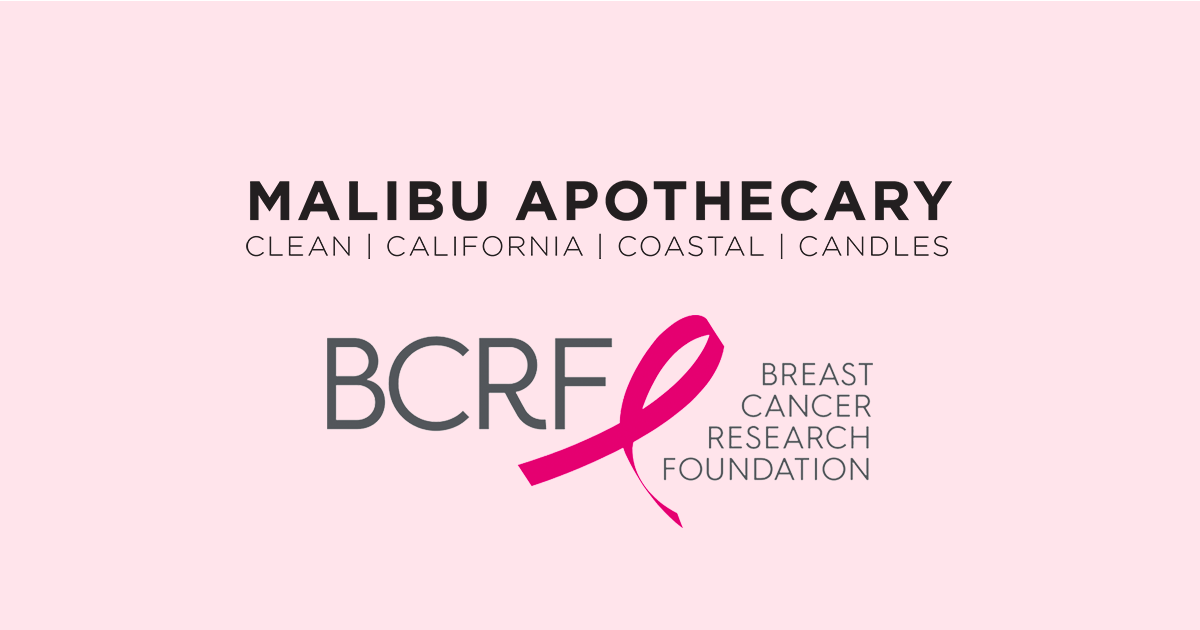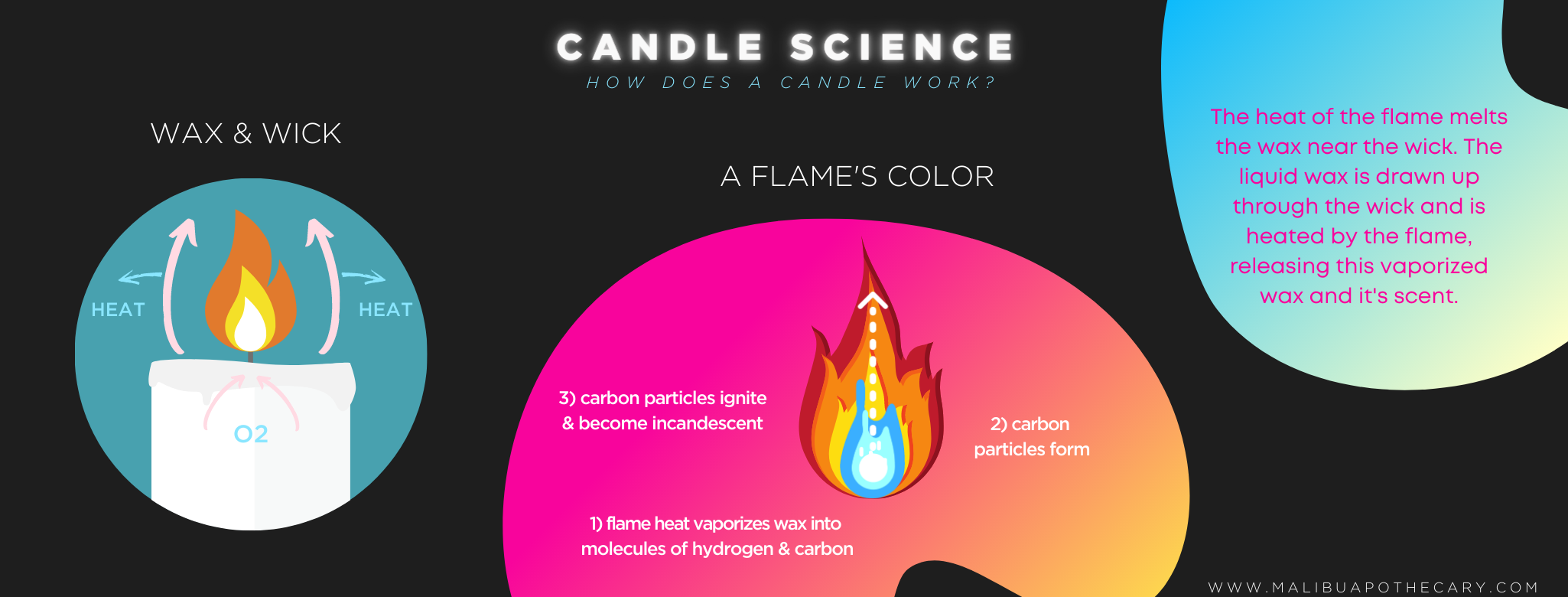
Candle Science: How Does a Candle Work?
Outside of a candle's remarkable ability to transport us from the comfiest of occasions to idyllic getaways, there is a lot that goes on behind the scenes. Have you ever wondered how it all works?
Elements of heat, light, and combustion can all be studied in the science of candles. Candles are made up of three essential components: the wick, wax, and fragrance.

Candle Wicks
A candle wick should be naturally absorbent so that it can easily draw the wax and fragrance. The candle wick acts an absorbent, pulling the liquid wax up and through the wick as it touches the flame.
For an all-natural clean burn, go for organic cotton wicks. Although lead wicks are banned from the U.S., make sure there are no other metals in the center of your wick. Metal is often used as an economical way to keep wicks straight in the manufacturing process.
Centering and trimming your wicks before each burn is a great way to extend your candle's life. For tips on how to keep your candle lasting the longest, refer to our Candle Care 101 guide.
Candle Wax
When you light a candle, the wax will melt around the center and outward from the wick. The wick absorbs the liquid wax and pulls it upward by capillary action. The wax vaporizes from the flame's heat, essentially turning it into a hot gas that burns the scented vapor wax and releases fragrance. The vaporizing wax cools the wick and protects it from burning. Depending on the wax type, the candle will burn at different rates and temperatures.
There are so many different types of candle waxes, and it can be hard to know or choose the right one. Some options include paraffin, soy, coconut, beeswax, apricot, vegetable, and more. Candle wax typically falls into two categories of toxic and nontoxic; however, all candle wax is essentially hydrocarbons meaning they are primarily composed of hydrogen atoms and carbon atoms.
One of the more common wax forms, paraffin, is a solid crystalline mixture of straight-chain hydrocarbons from crude oil. When burned, this wax type can release harmful chemicals. For more information on paraffin and why it can be toxic, read our guide on What Makes a Candle Toxic. Natural and cleaner waxes are typically derived from soy or coconut wax.
Candle Fragrance
Now you know how the flame's heat melts wax when lighting the wick of a scented candle. But how does fragrance release to fill our rooms with the aromas we know and love? Well, when the molecules of the fragrance are heated, they emit an aroma. The scent will grow stronger as more wax melts. This means the larger your candle, the more scent that will be released as the wax liquefies to your container's edge.
You may notice that when you burn a candle, the strength and the characteristics of the scent change. A candle's strength is referred to as it's hot and cold throw. A cold throw is the fragrance's strength before it has been lit, and the hot throw is the scent's strength when heat is applied. The characteristics of smell can also change depending on the length of time you have burned it. This is due to the types of notes in your fragrance: top, heart, and base. We break these differences down in our article, The Art & Science of Fragrance Explained.
Sources:
- https://www.britannica.com/science/paraffin-wax#:~:text=Paraffin%20wax%20is%20obtained%20from,%2C%20cosmetics%2C%20and%20electrical%20insulators.&text=In%20wood%20and%20paper%20matches,an%20easily%20vaporized%20hydrocarbon%20fuel.
- https://home.howstuffworks.com/question267.htm#:~:text=When%20you%20light%20a%20candle,the%20wax%20vapor%20that%20burns.&text=If%20you%20touch%20a%20lit,and%20re%2Dlight%20the%20wick.
- https://candles.org/candle-science/
Read more

Many people leave self-care at the bottom of their list because they believe the other matters in their lives are more pressing. However, taking care of yourself should not be seen as a luxury. Her...

Chances are you, or someone you know has been diagnosed with breast cancer. That is because, according to The American Cancer Society, there is a 1 in 8 chance that an American woman will develop b...

Leave a comment
All comments are moderated before being published.
This site is protected by hCaptcha and the hCaptcha Privacy Policy and Terms of Service apply.